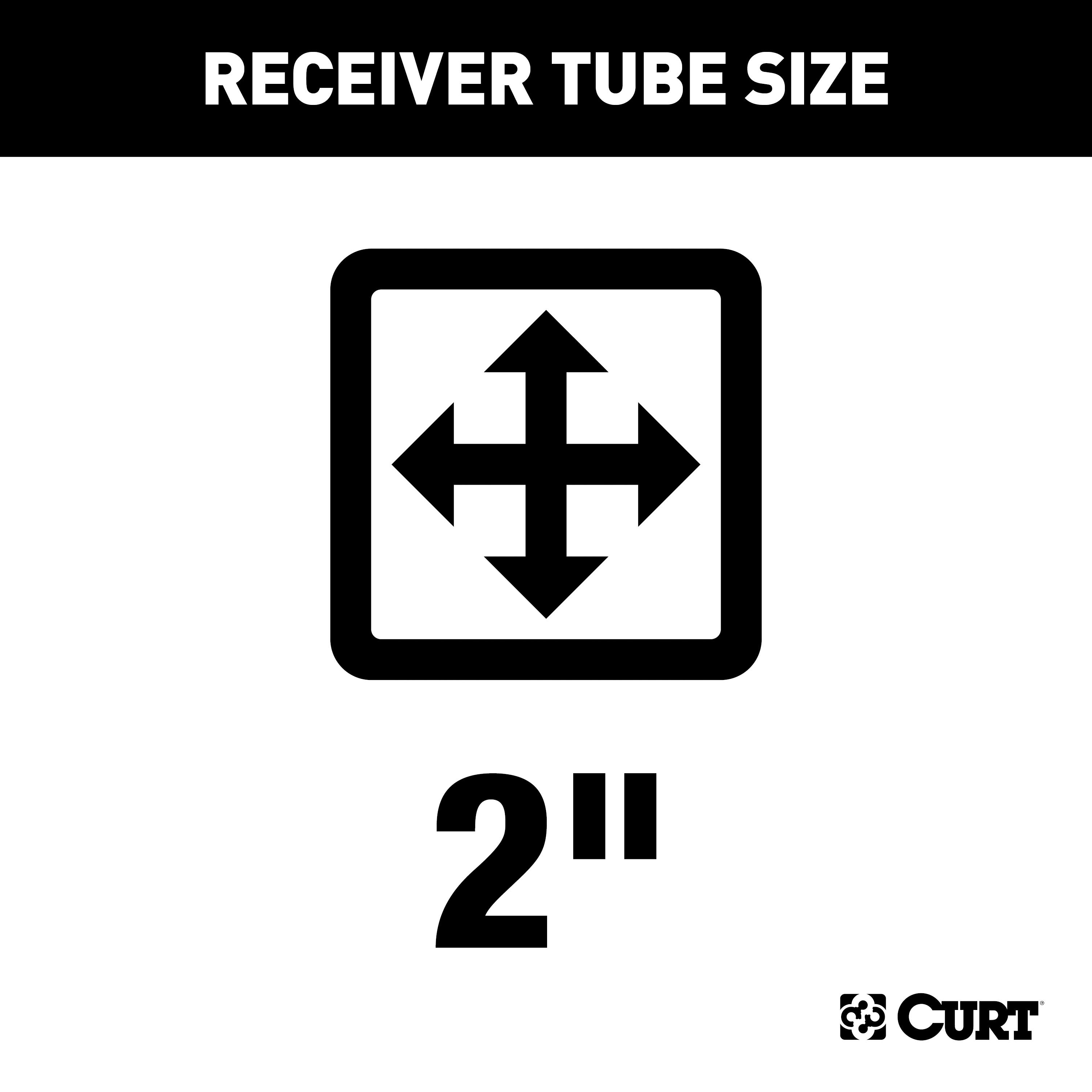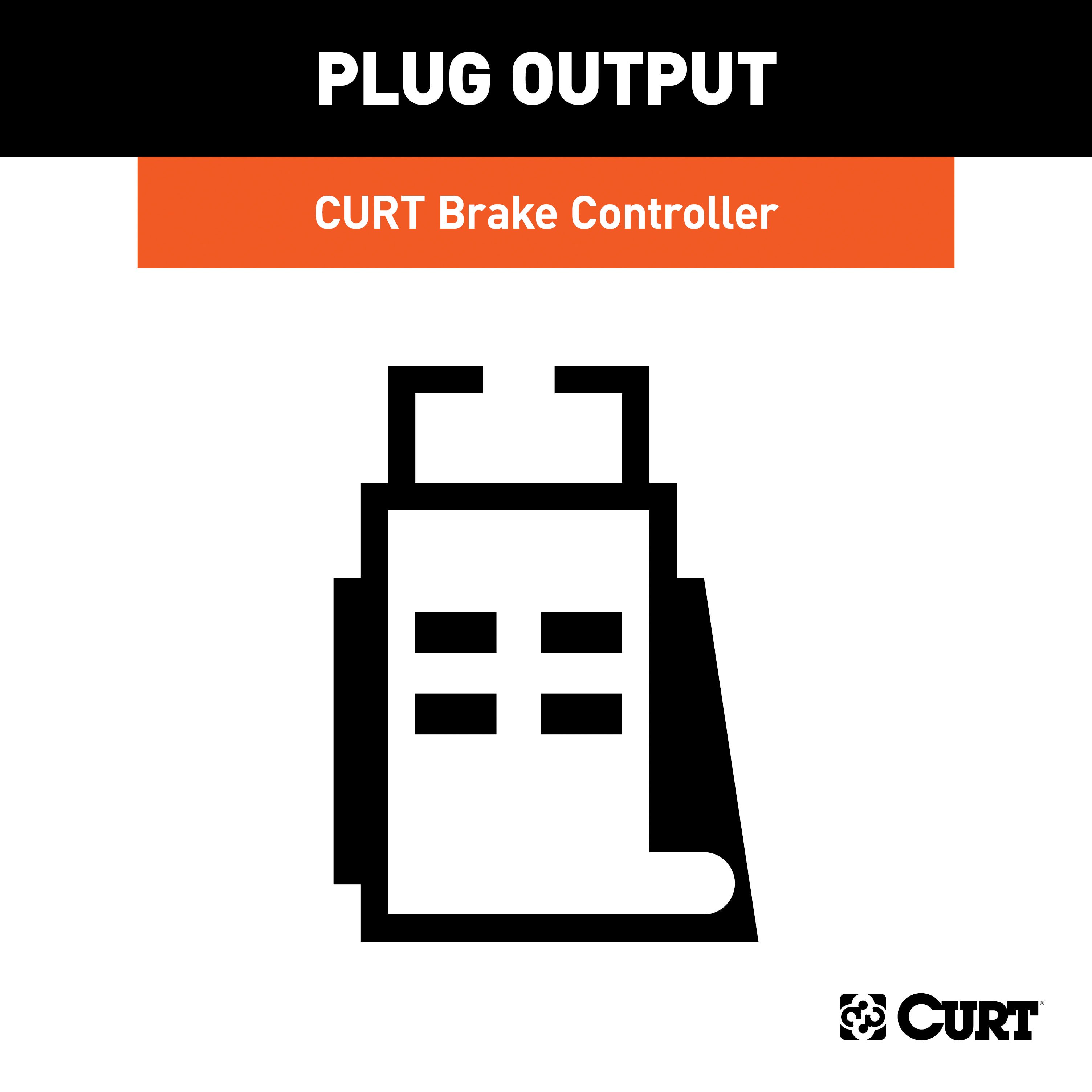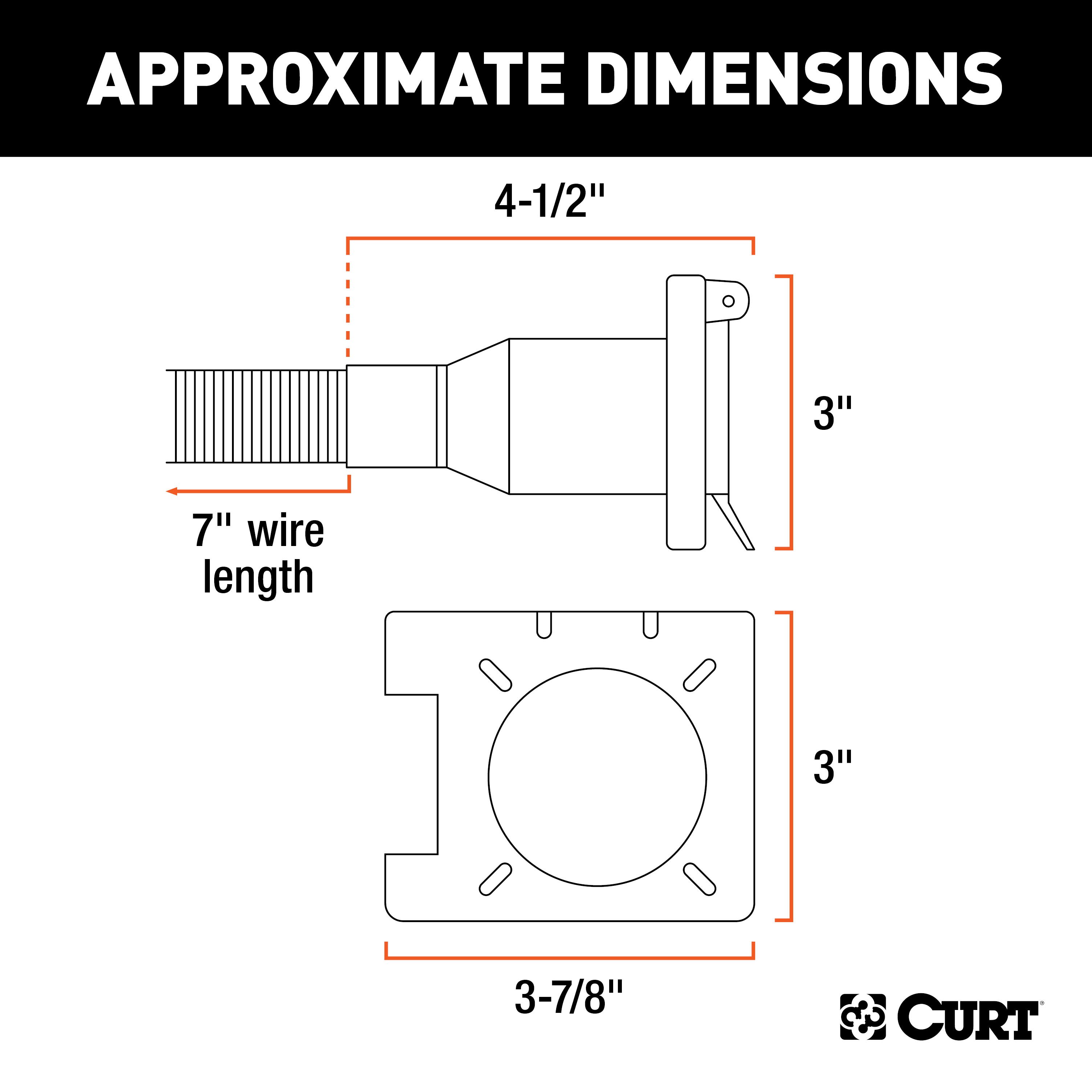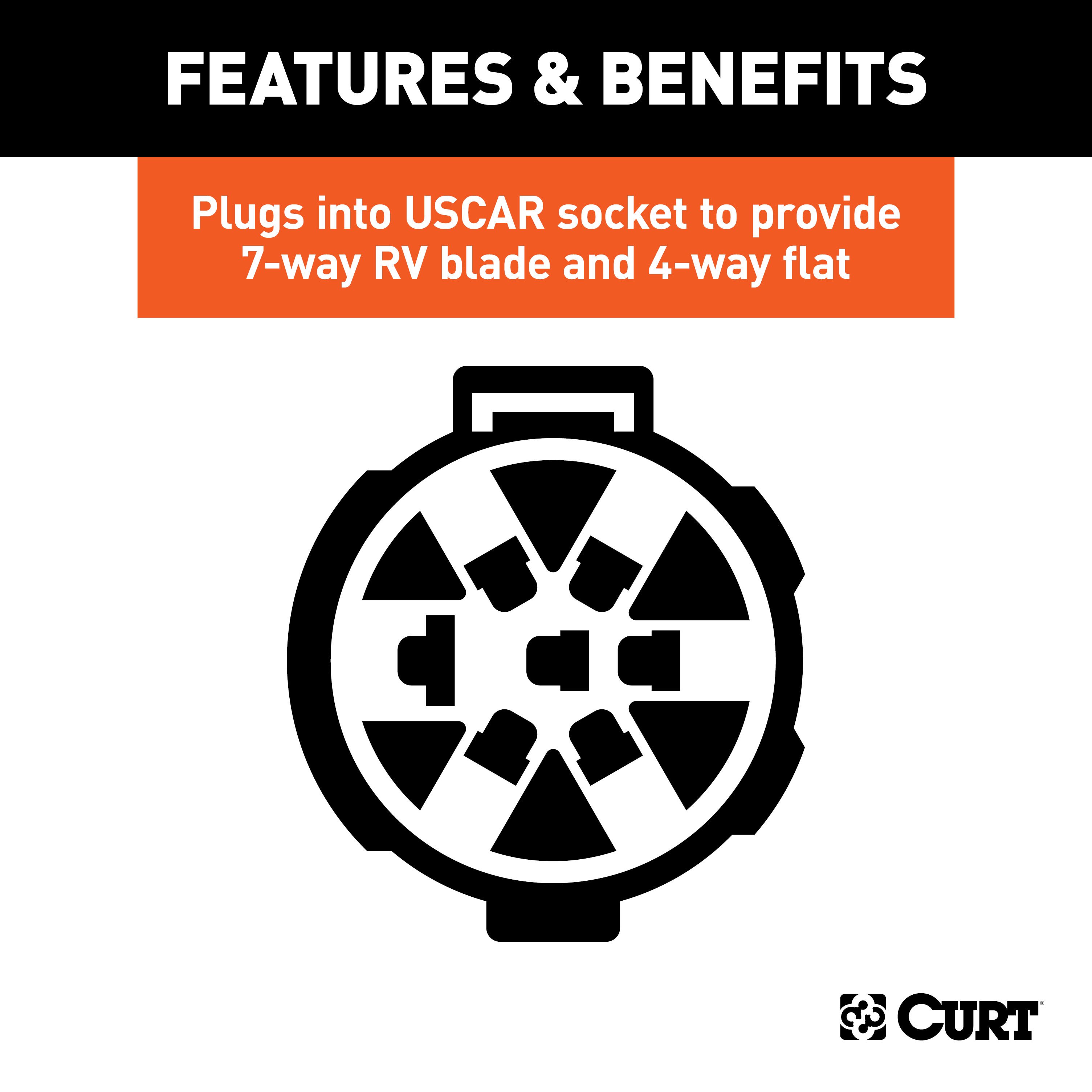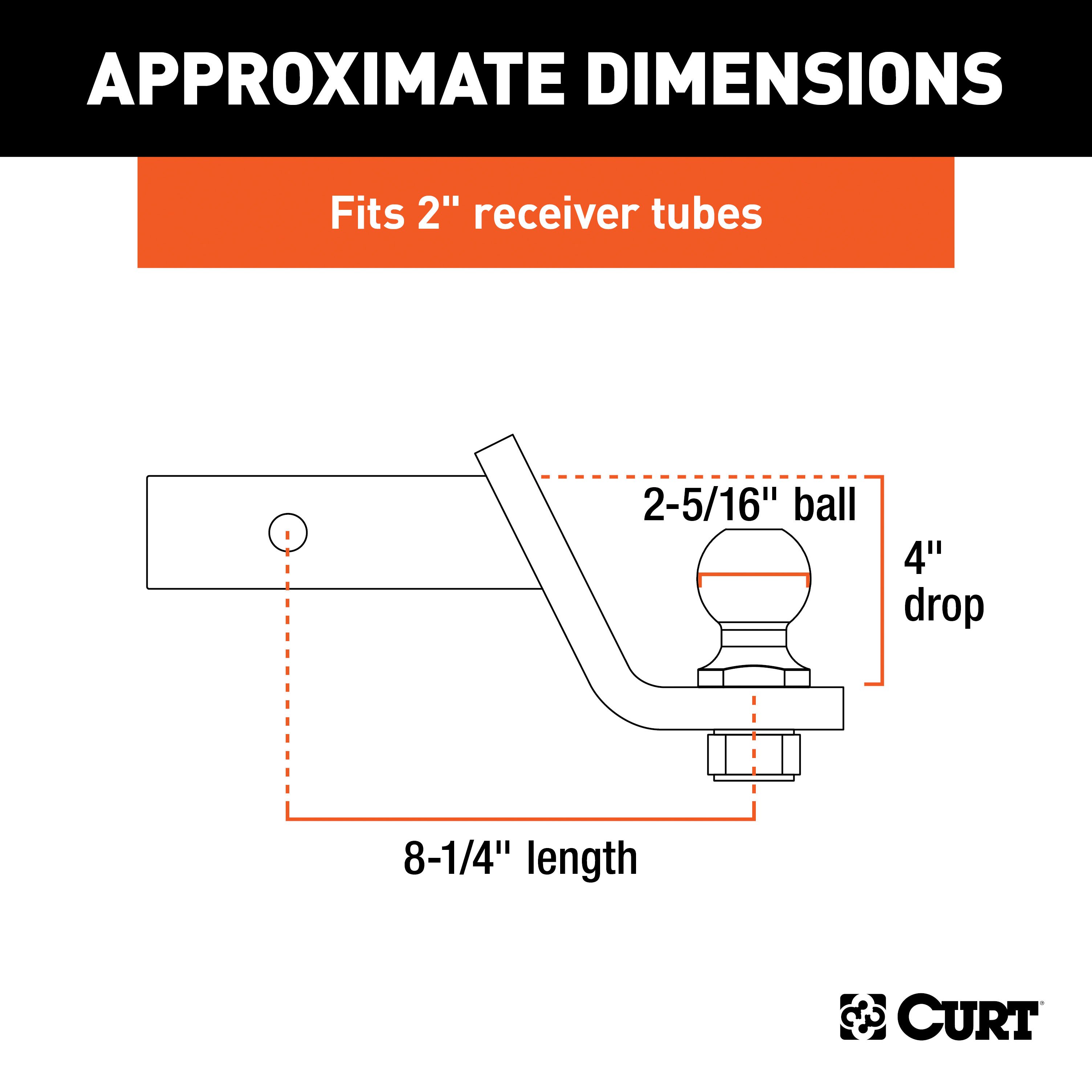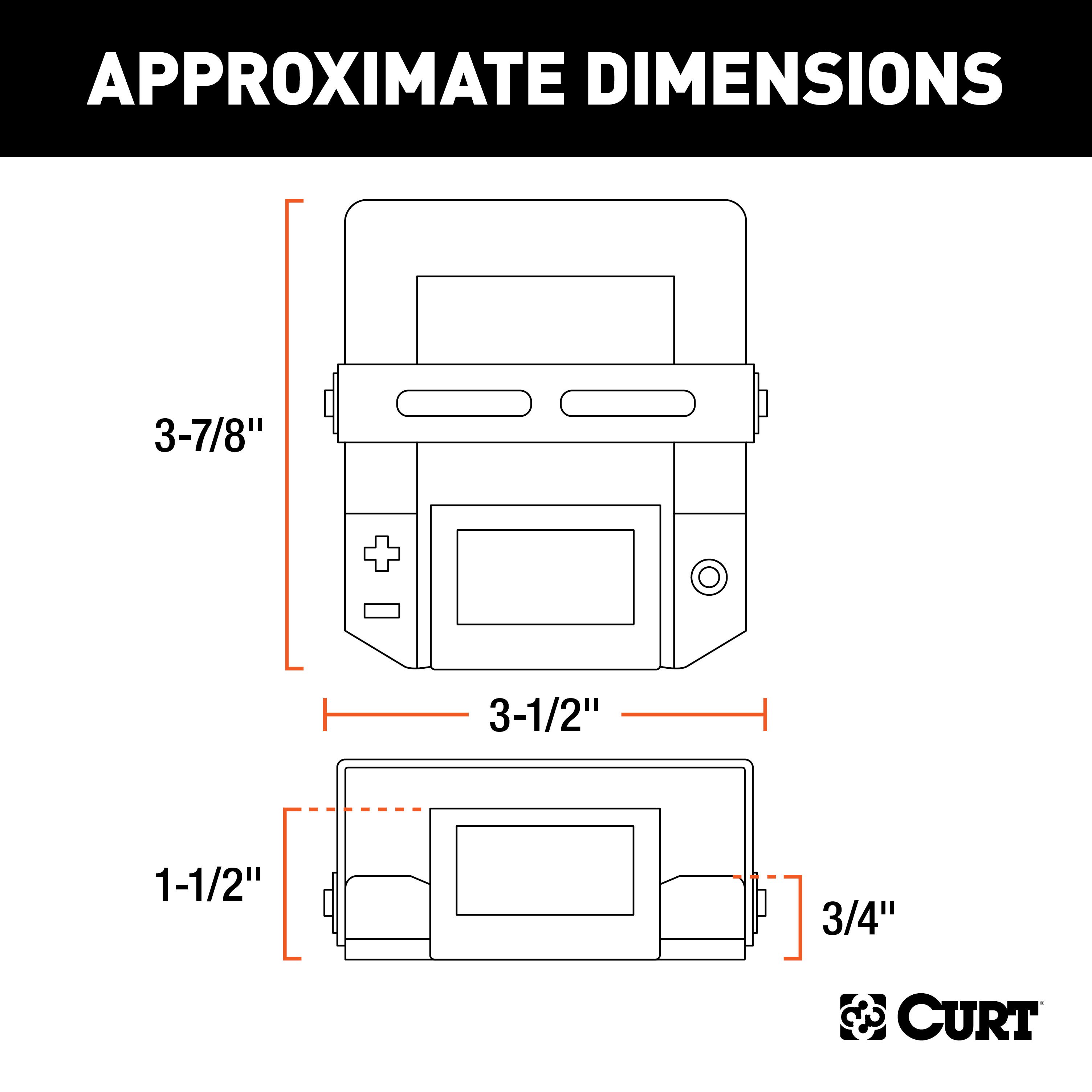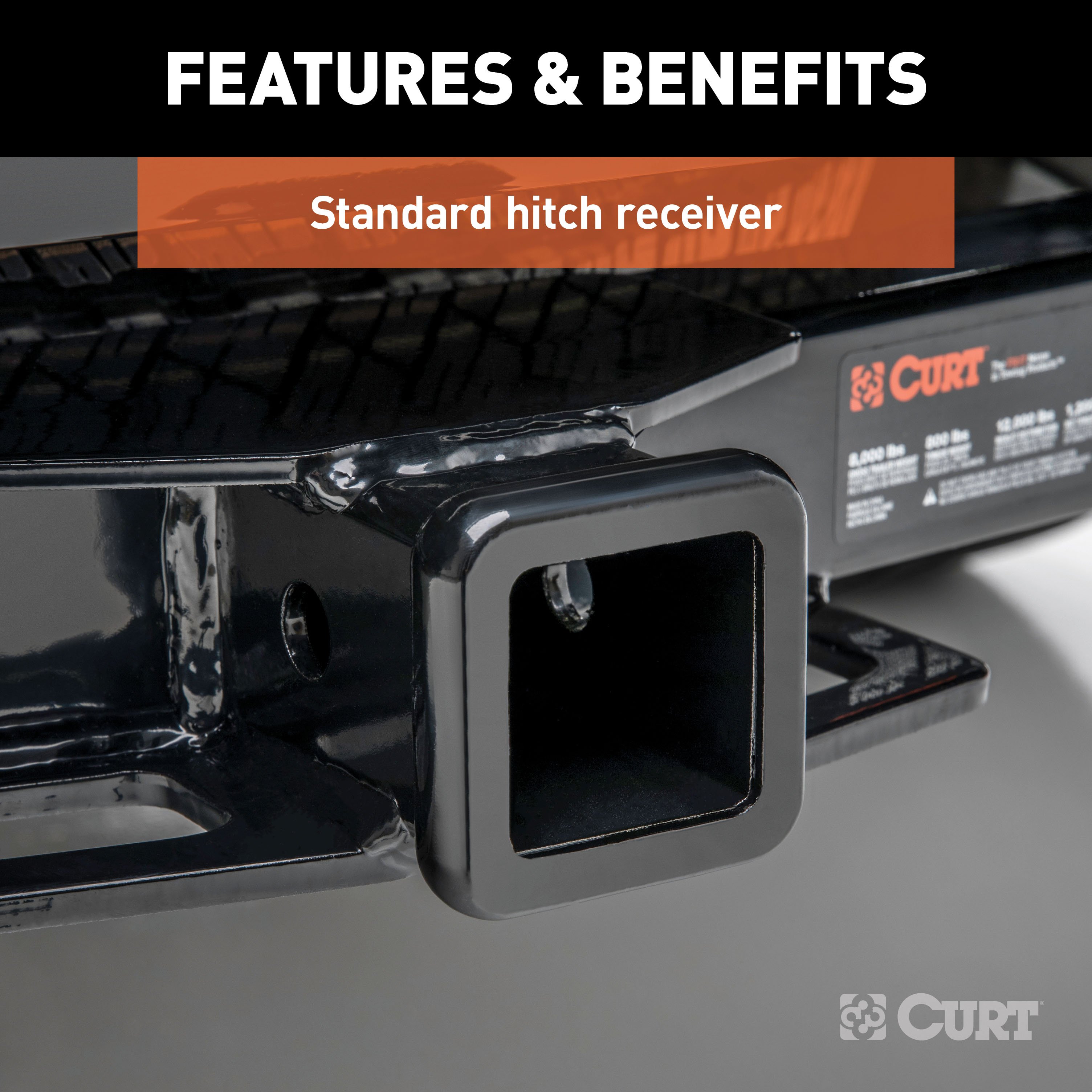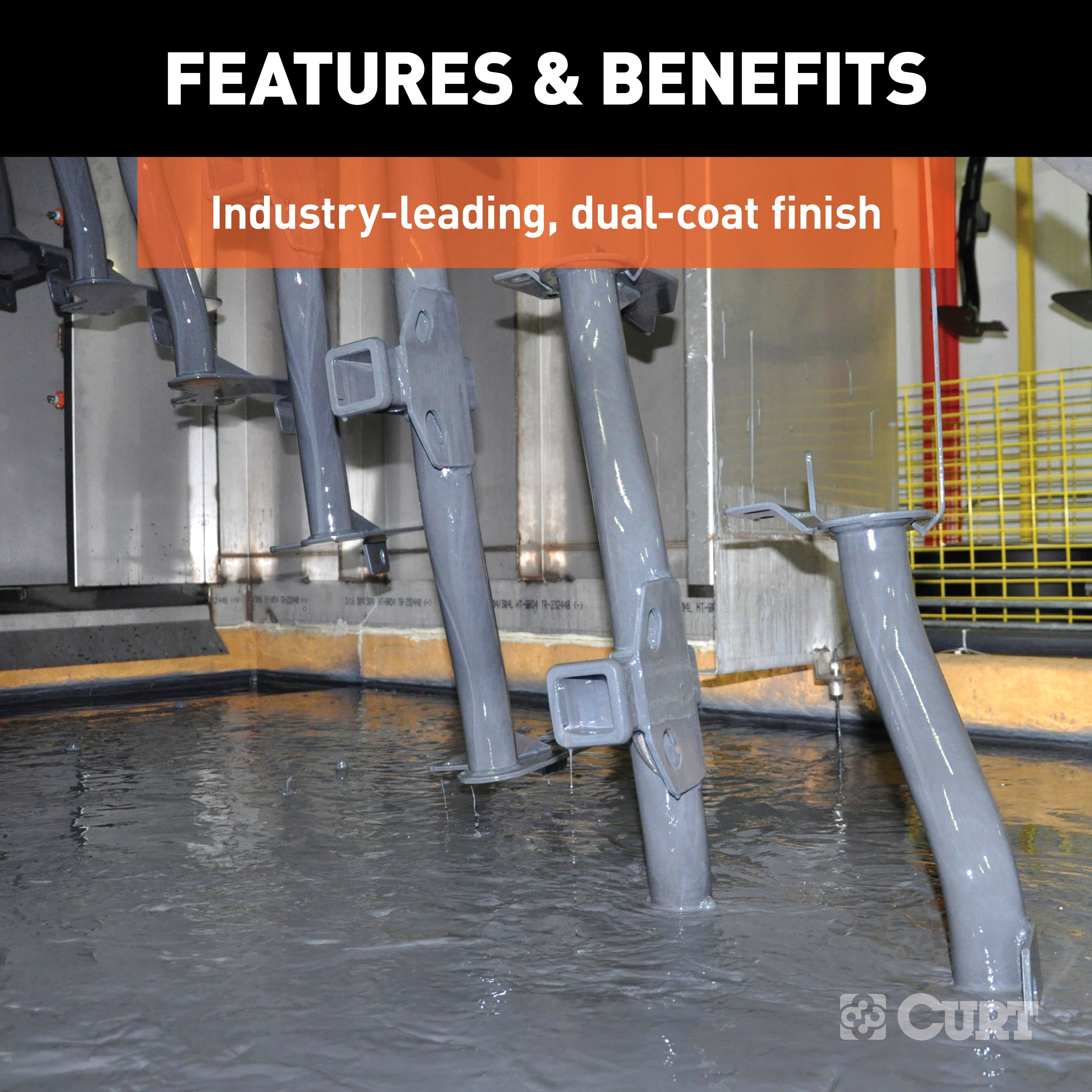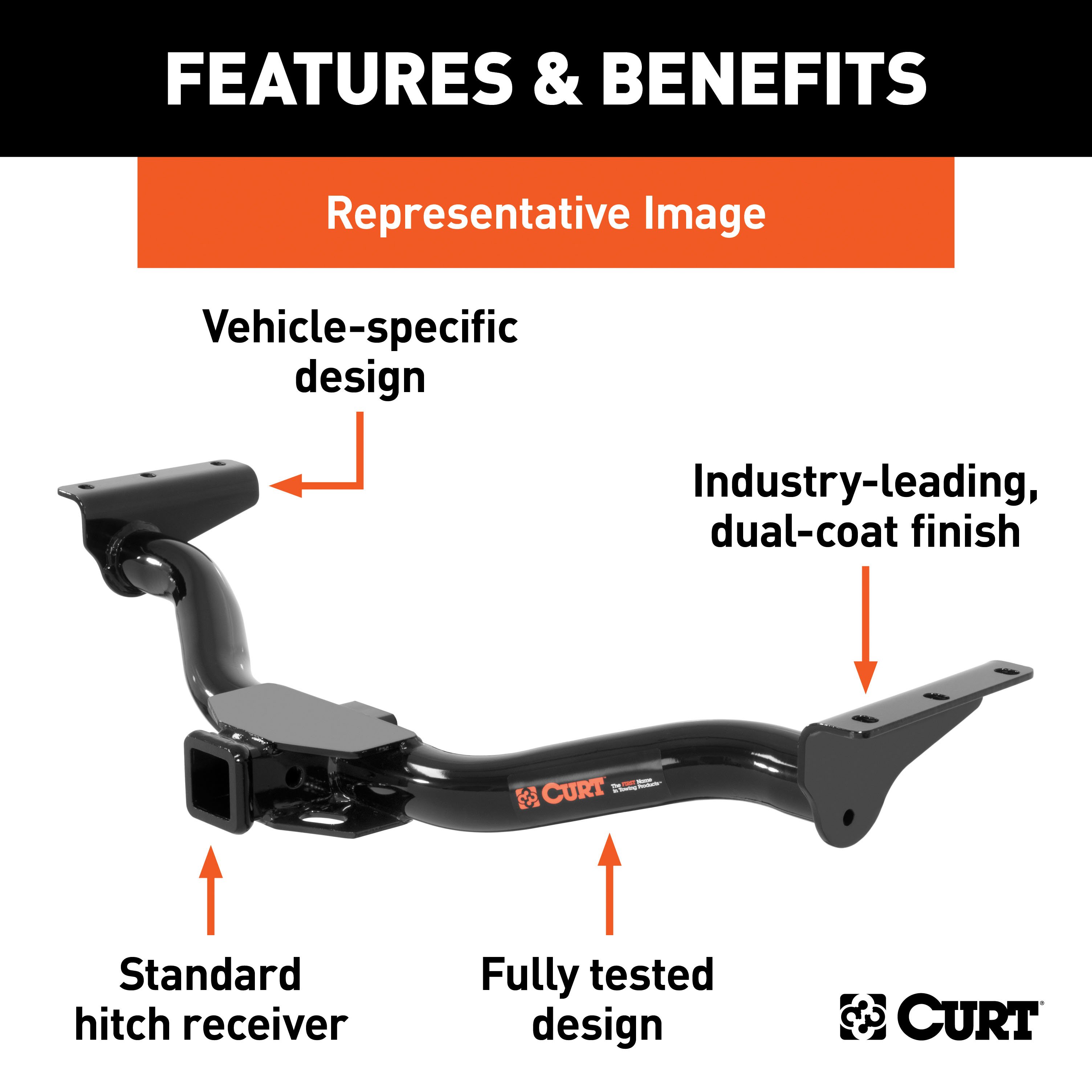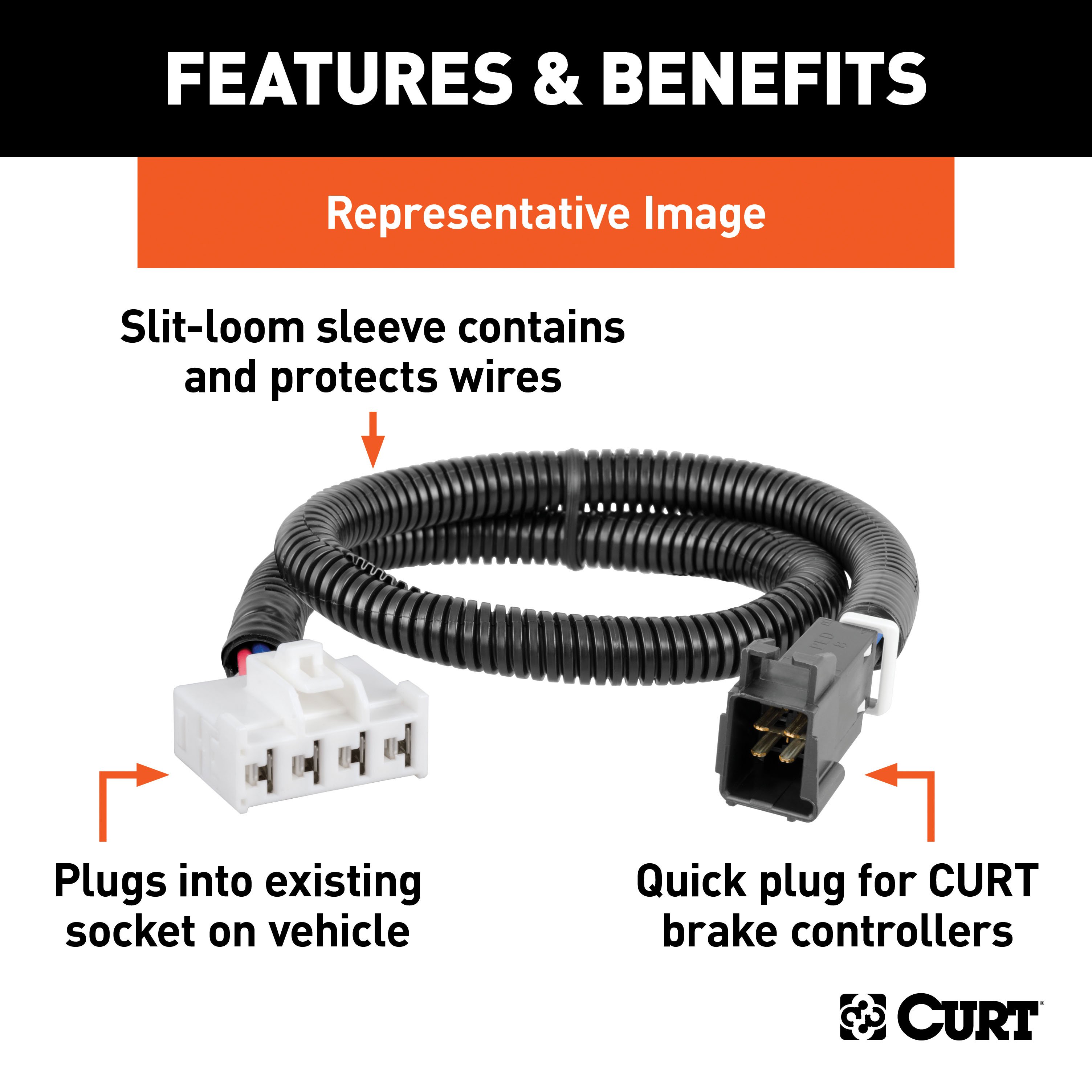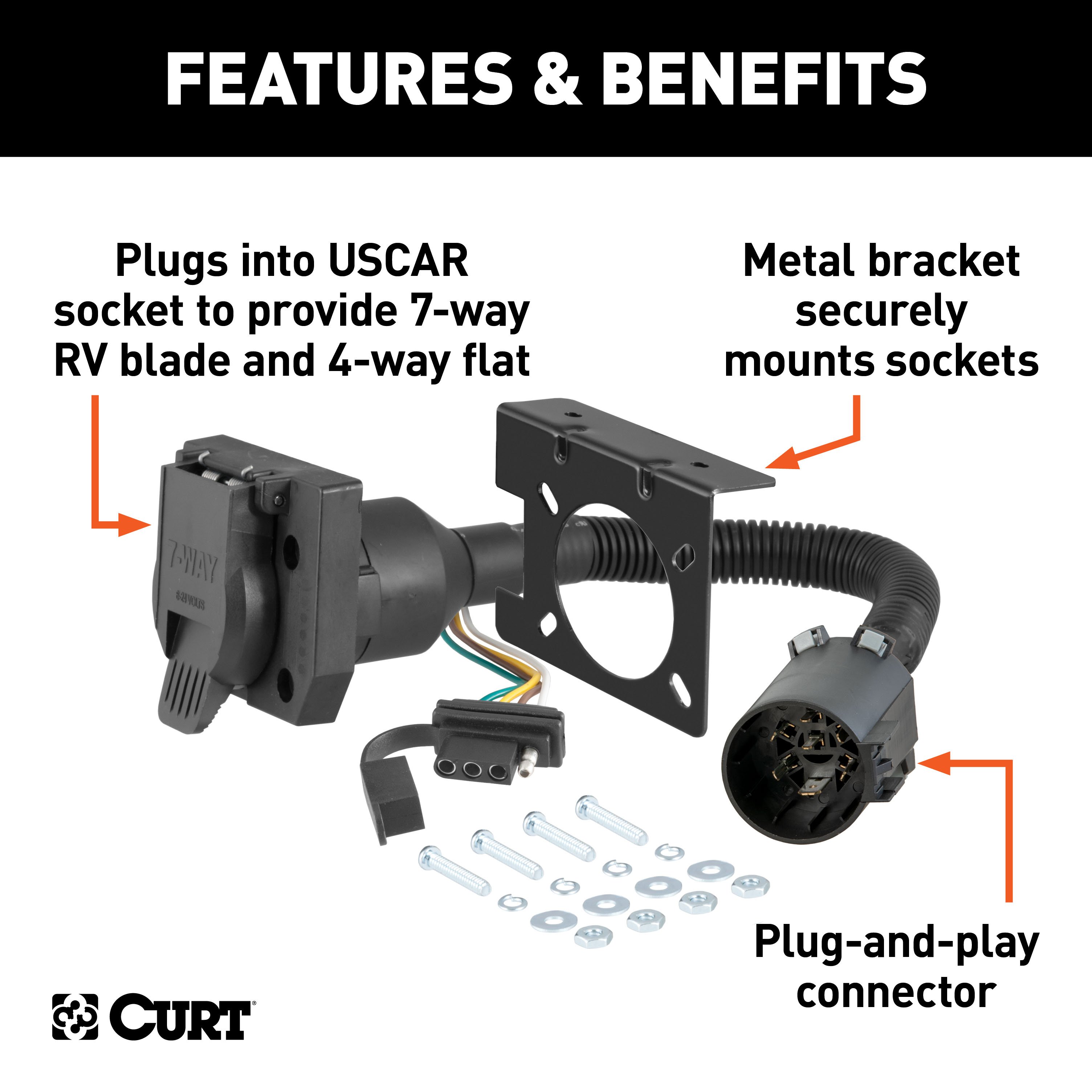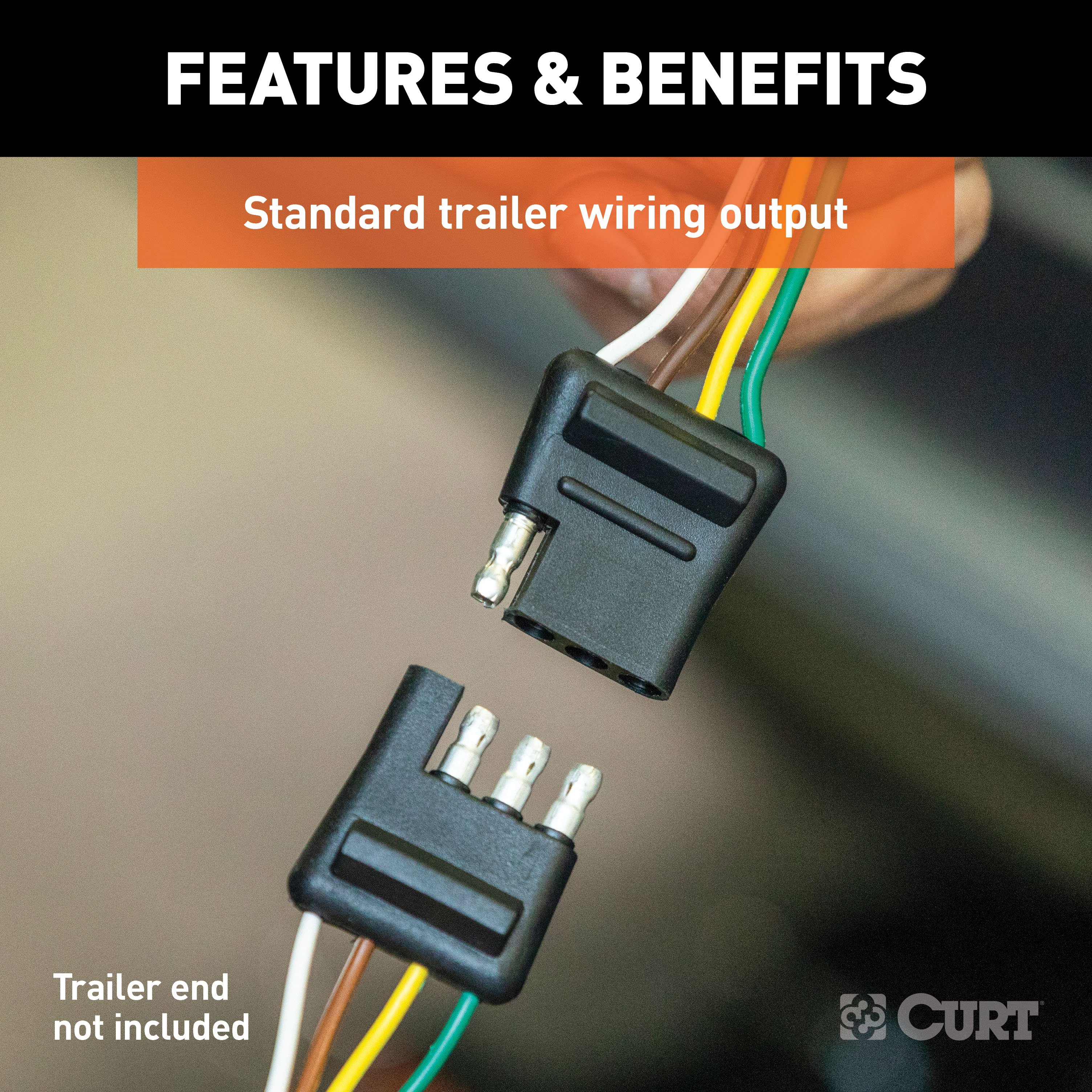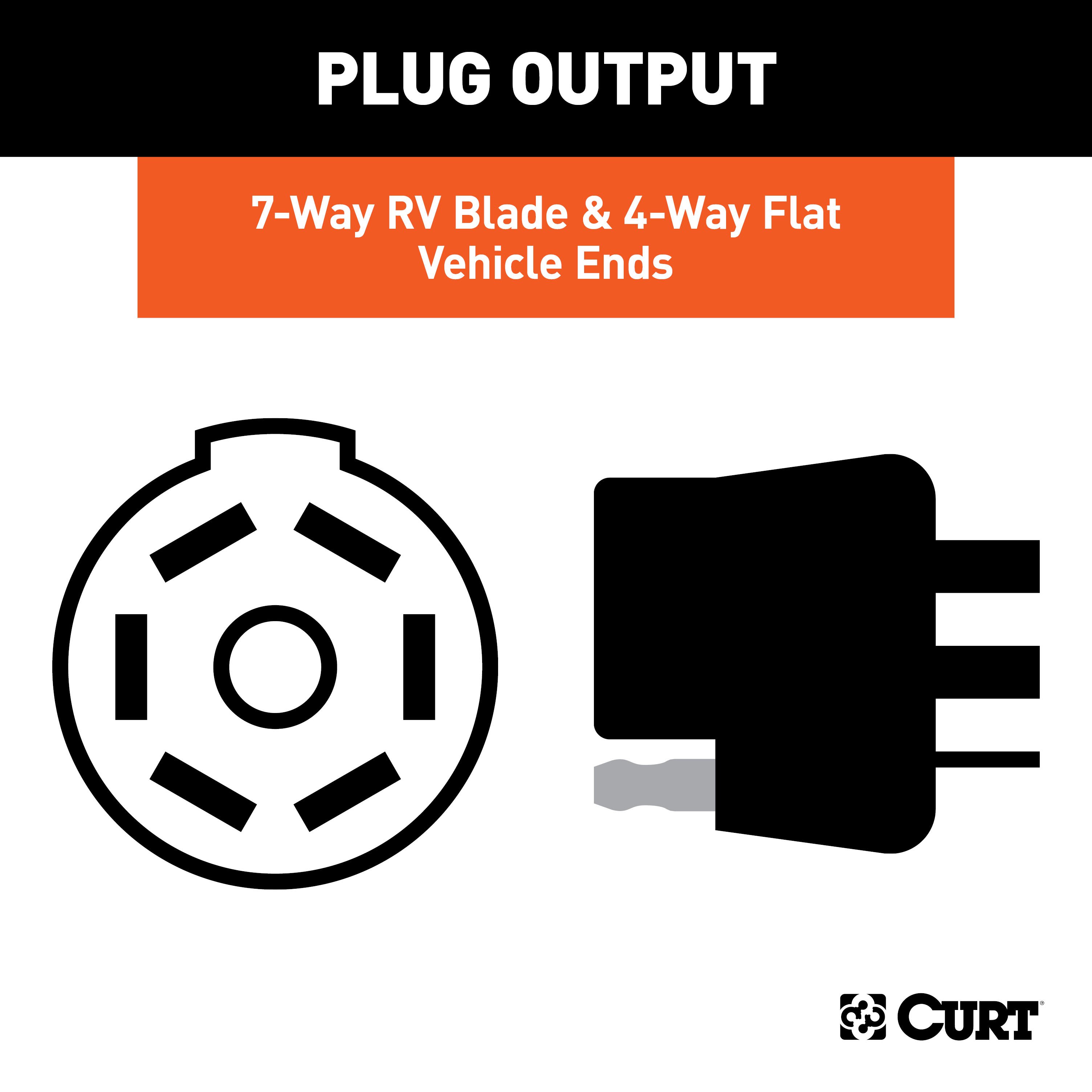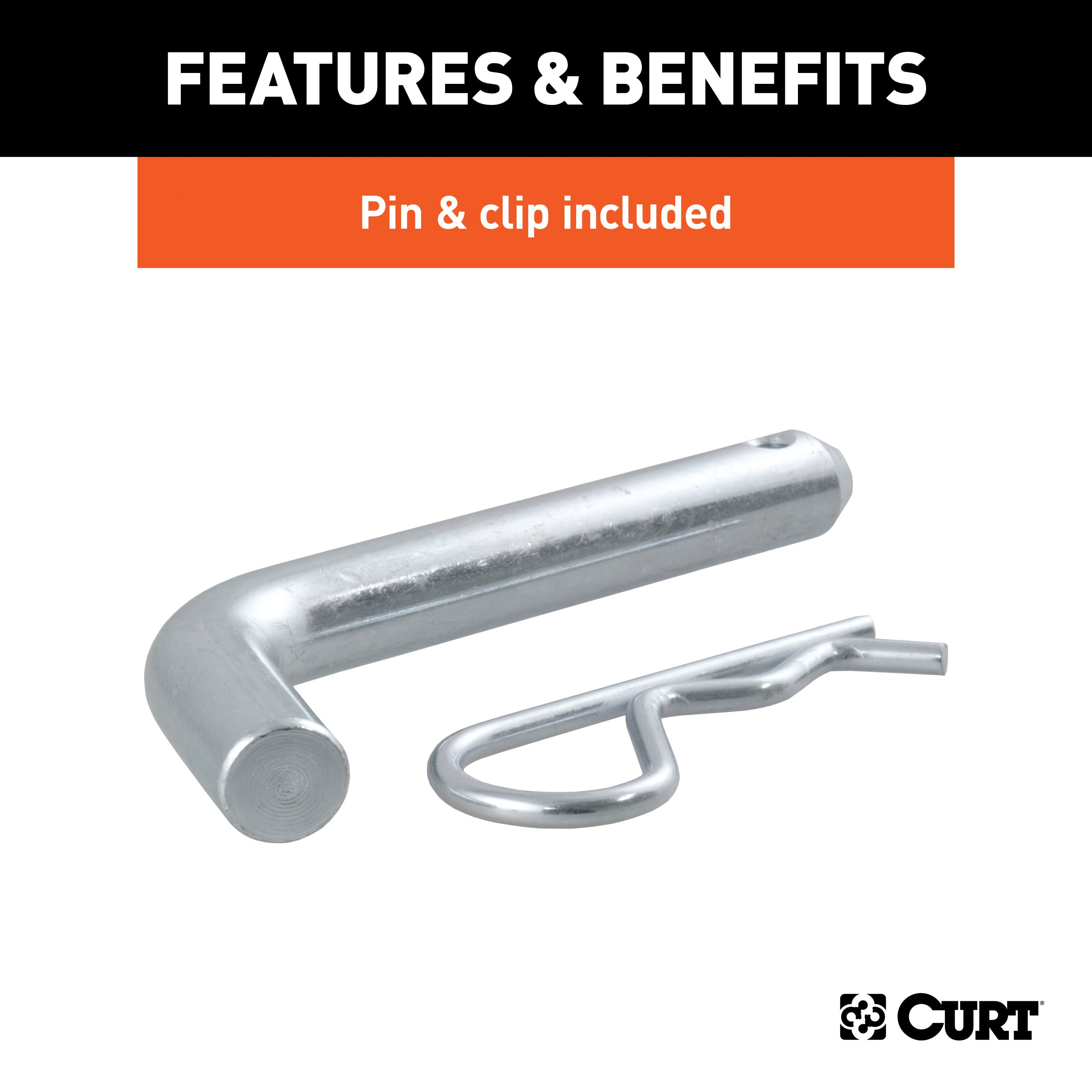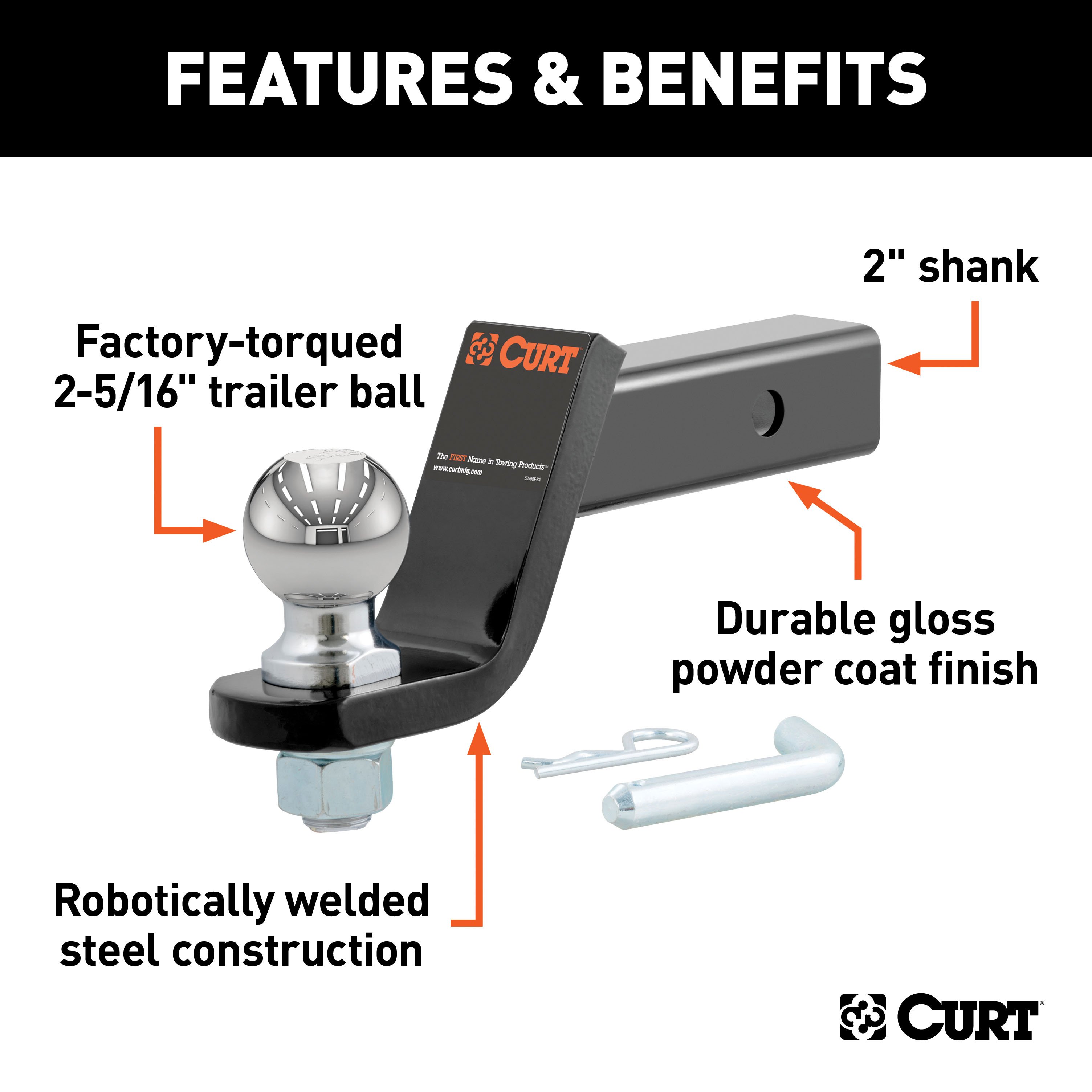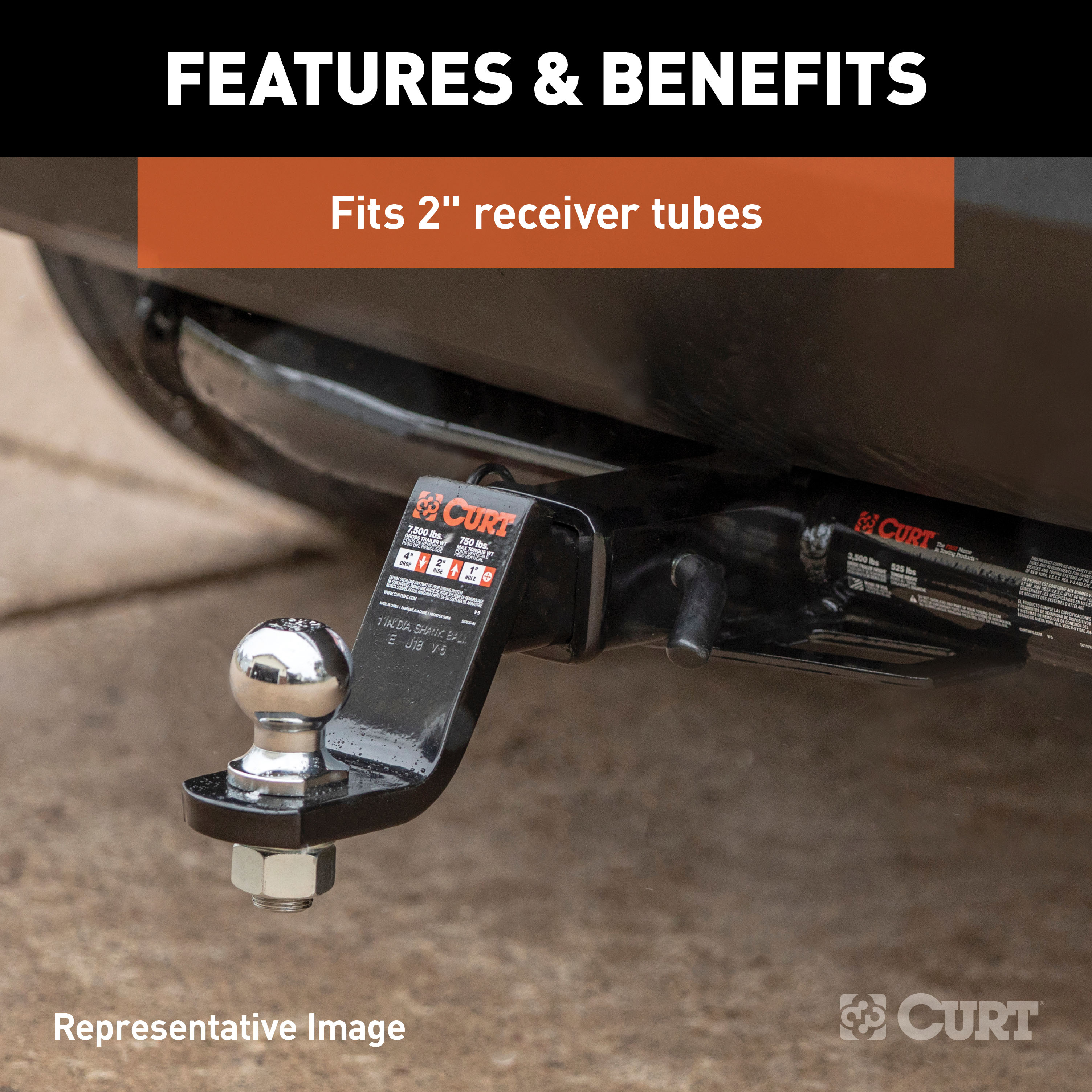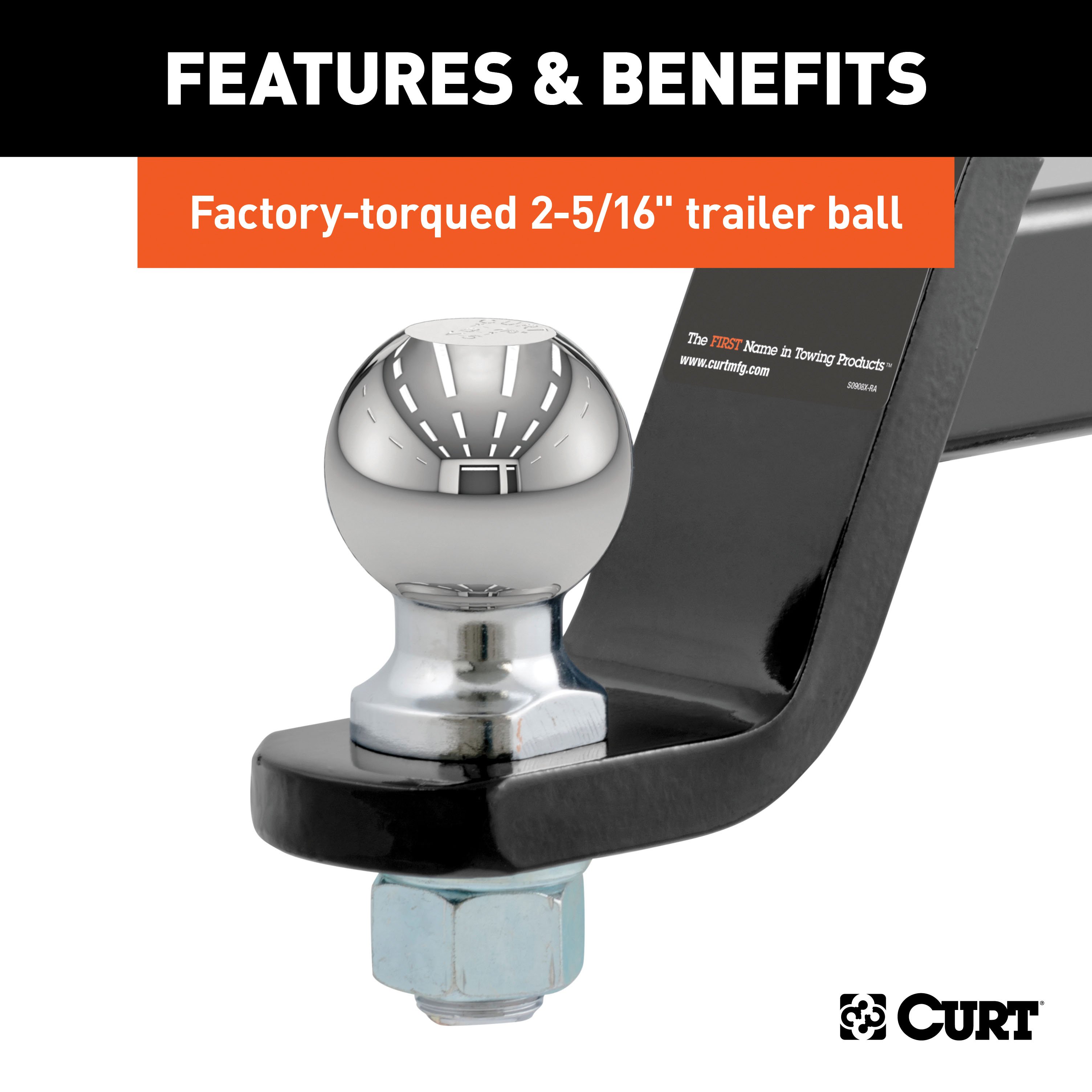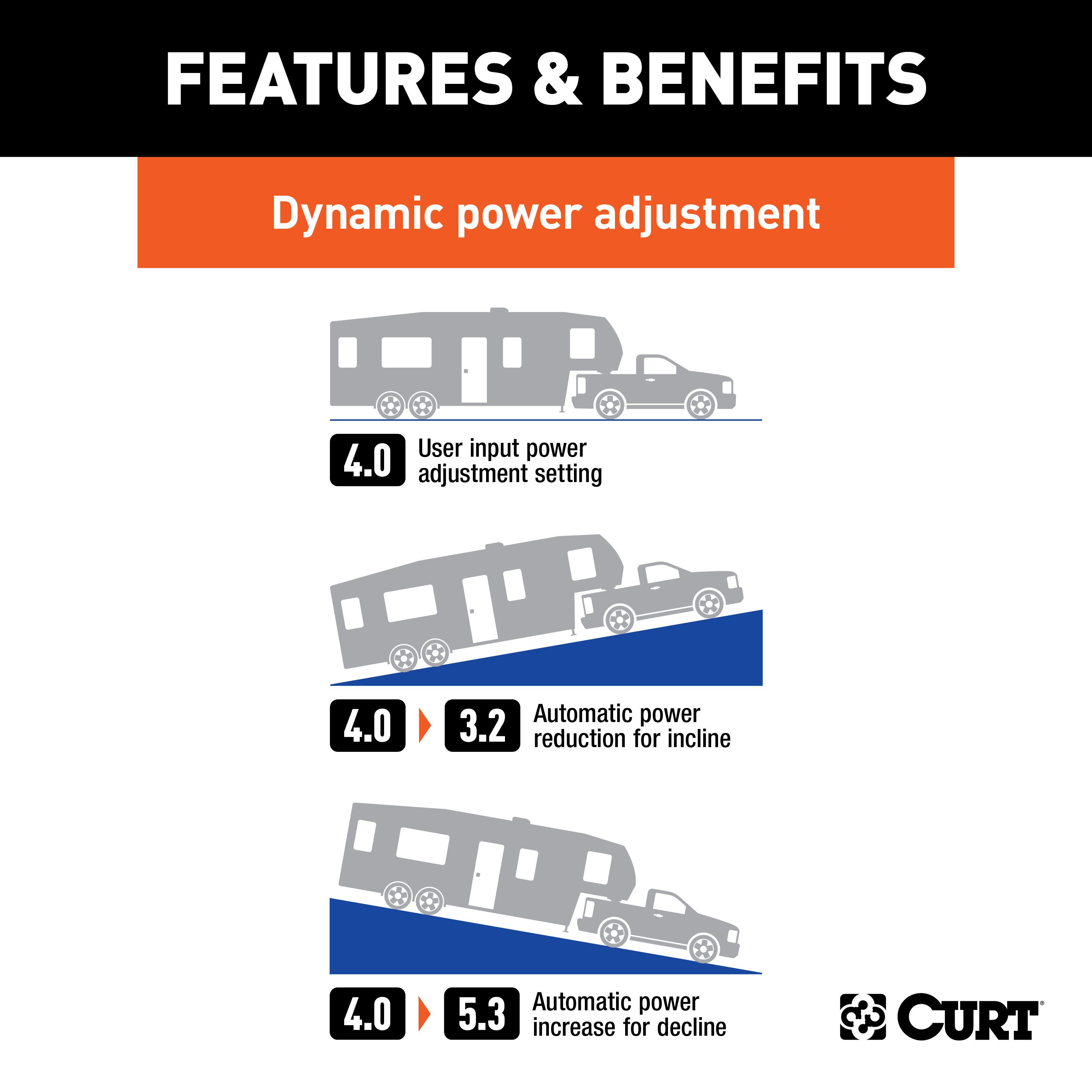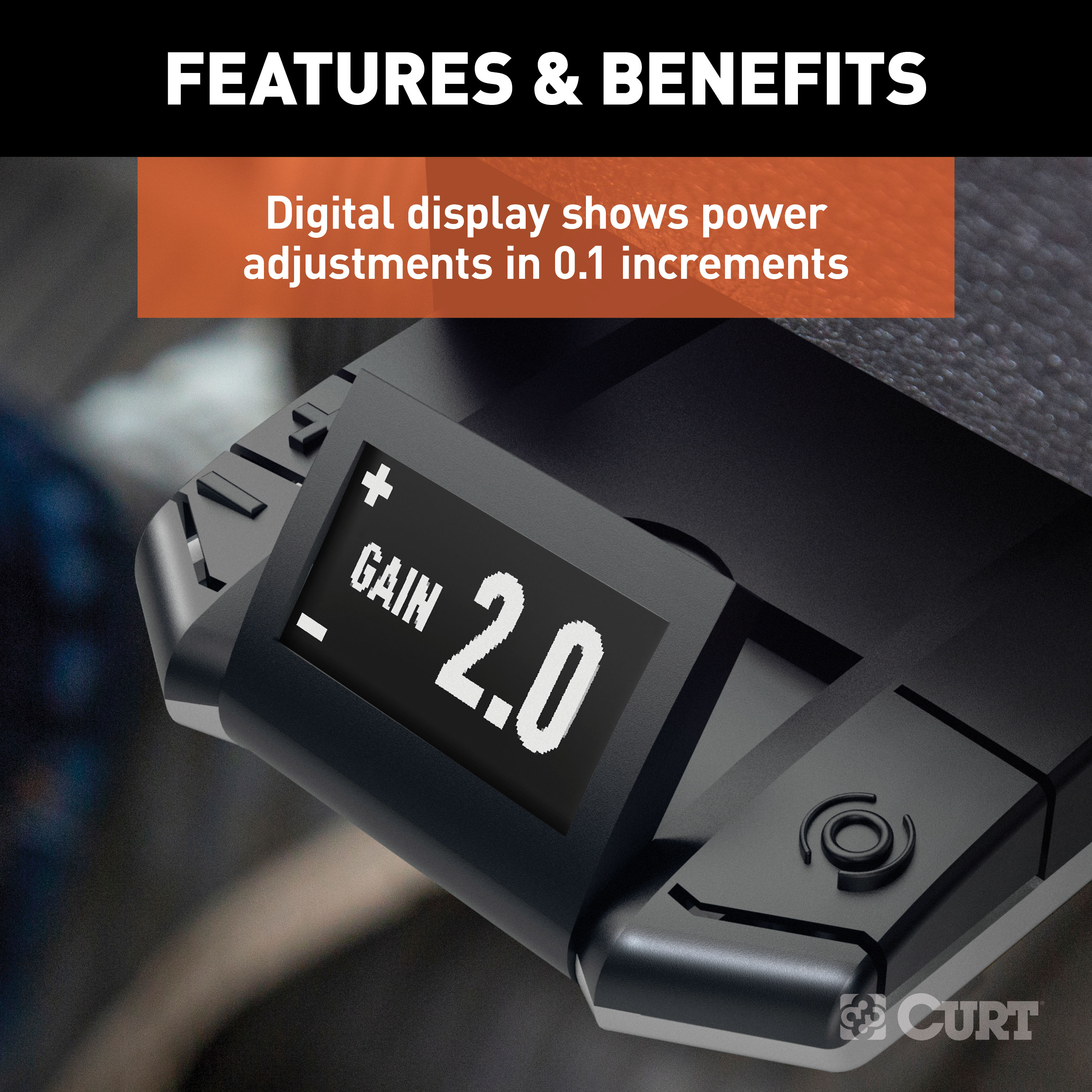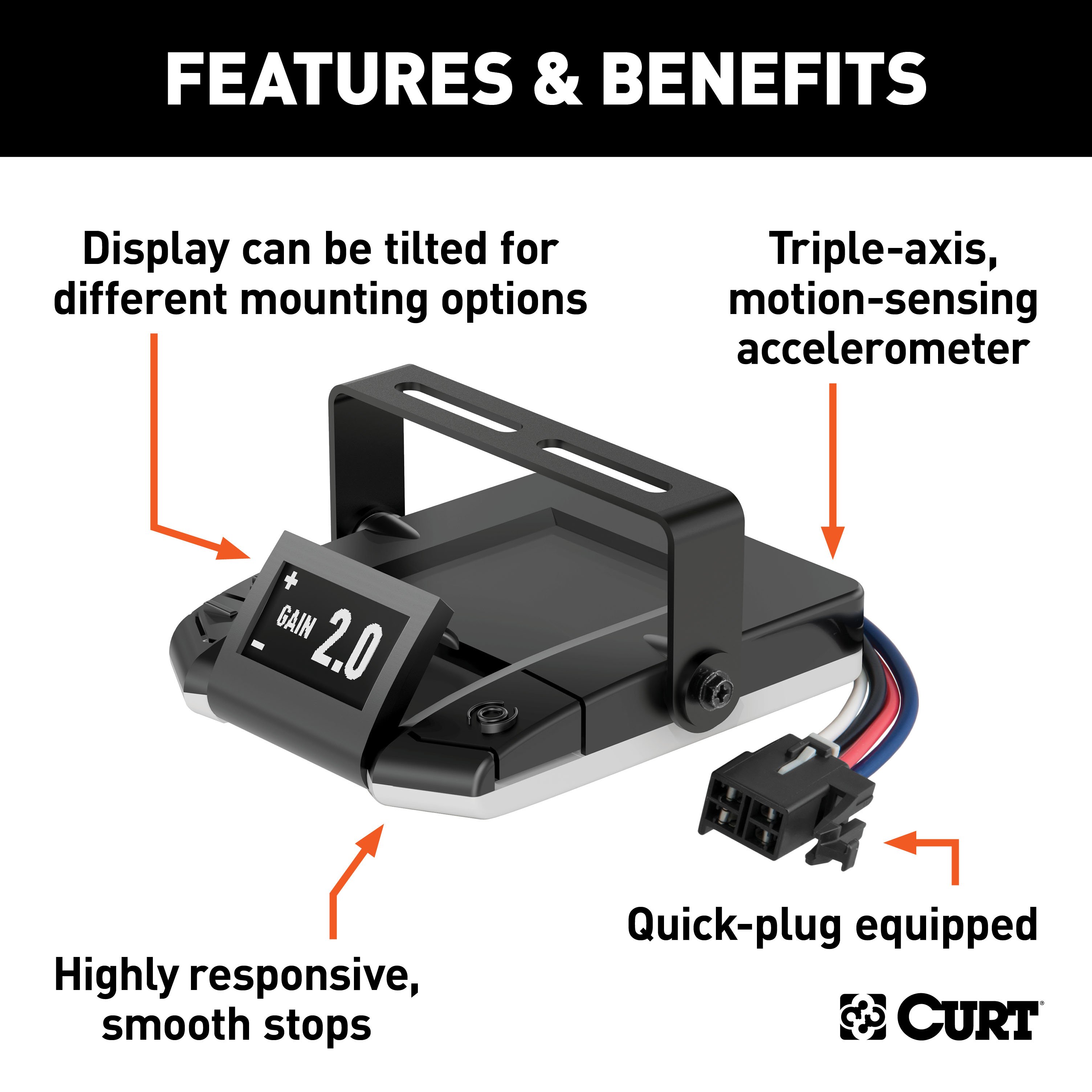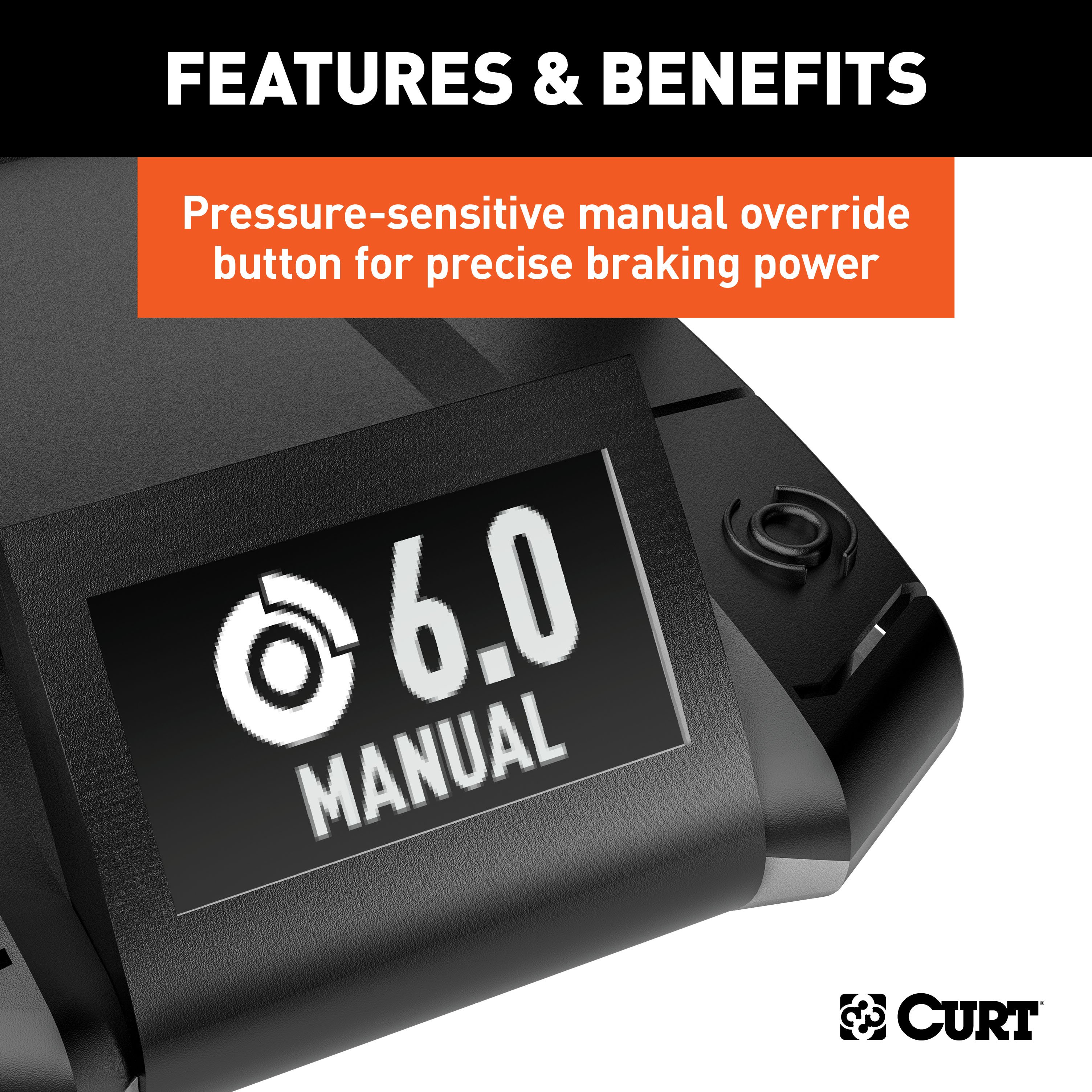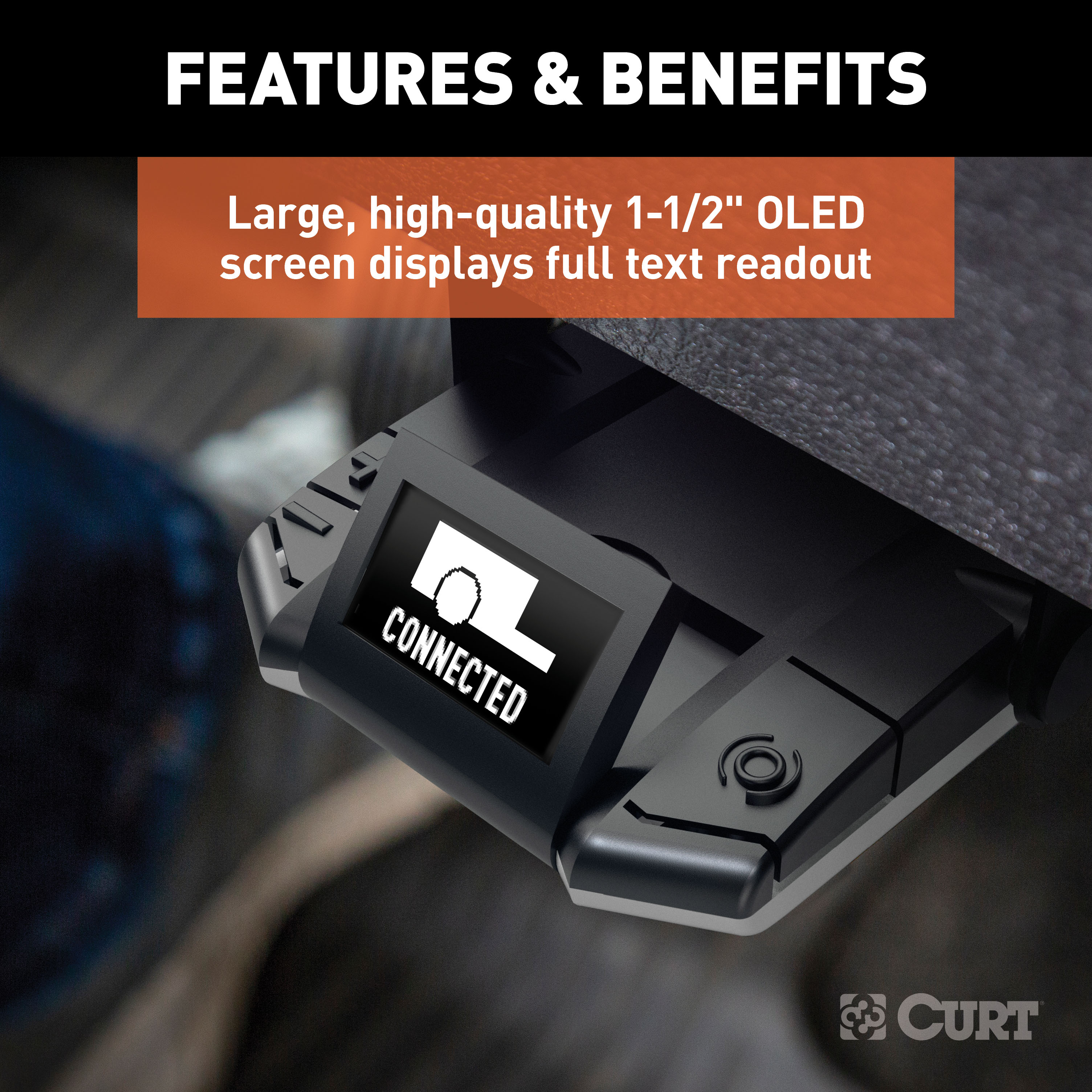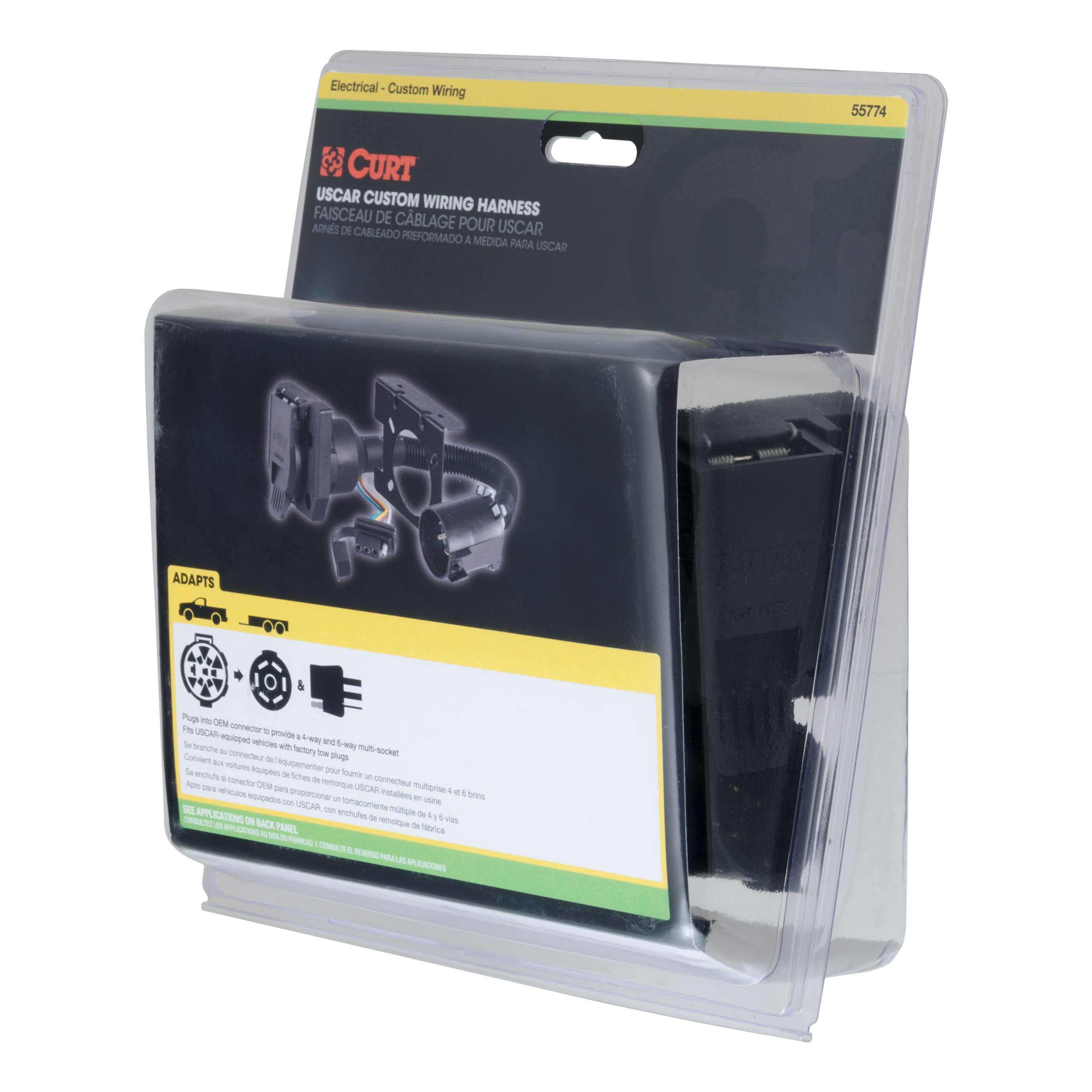Product Details
- Brand: Curt
- Model: 13386 51322 55774 45042 51160-CH1259
- Includes: Class 3 Trailer Tow Hitch, Dual-Output 7 & 4-Way Connector Plugs into USCAR, Brake Controller Harness, Loaded Ball Mount with 2-5/16" Ball 2" Shank, Assure Proportional Trailer Brake Controller with Dynamic Screen
Compatibility Chart
Get Expert Help
For 2011-2019 Ford Explorer Tow Package Camp n' Field Trailer Hitch + Brake Controller Curt Assure 51160 Proportional Up To 4 Axles + 7 Way Trailer Wiring Plug & 2-5/16" ball 4 inch drop Fits Models w/ Existing USCAR 7-way Curt 13386 2 inch Tow R Install Notes
Installation Instructions for 2020-Present Ford Explorer and Police Interceptor Utility
Part Numbers:
- 13386
Tools Required:
- Ratchet
- Torque Wrench
- 6" Socket Extension
- 18mm Socket
- 3/4" Socket
- 19mm Socket
- 5/8" Socket
- Safety Glasses
Step-by-Step Instructions:
Step 1: Lower the exhaust
- Remove three rubber isolators to lower the exhaust.
- Support the exhaust during installation to prevent damage.
- Refer to the "Rubber Isolator Removal Diagram" for guidance:
- Use a 5/8" wrench to cradle the hanger rod.
- Insert a pry bar between the wrench and hanger stop to remove the isolator.
- Apply lubricant or soapy water for easier removal.
Step 2: Remove muffler isolators and tow loop
- Remove two rubber isolators from the muffler.
- Remove the exhaust hanger and/or tow loop if present.
- Return hangers and hardware to the vehicle owner.
Step 3: Attach isolators to the hitch
- Install the rubber isolators removed in Step 2 onto the trailer hitch using the provided 7/16" hex bolts (#9).
- Secure with 7/16" flat washers (#7) and nylock nuts (#8).
Step 4: Fishwire carriage bolt and spacer
- Use the reverse fishwire technique to guide a 1/2" carriage bolt (#6) and square-hole spacer (#5) through the existing hole in the passenger-side frame rail:
- Attach the fishwire to the carriage bolt and slide the spacer onto it.
- Push the bolt and spacer through the hole and pull the bolt back into position.
Step 5: Raise the hitch into position
- Position the hitch and secure it to the vehicle using:
- M12 hex bolts (#1) and 1/2" conical-toothed washers (#2) into existing vehicle weldnuts.
- Secure the 1/2" carriage bolt with the serrated-flange nut (#4).
Step 6: Torque all hardware and reinstall exhaust
- Torque M12 hardware to 79 lb-ft.
- Torque 1/2" hardware to 110 lb-ft.
- Raise the exhaust back into its original position.
Hardware List:
- (4) M12-1.75 x 40mm Hex Bolts
- (4) 1/2" Conical-Toothed Washers
- (1) 1/2" Fishwire
- (1) Serrated-Flange Nut, 1/2"-13
- (1) Square-Hole Spacer, 1/4" x 1" x 2-1/2"
- (1) Carriage Bolt, 1/2"-13 x 1-1/2"
- (4) Flat Washers, 7/16"
- (2) Nylock Nuts, 7/16"-14
- (2) Hex Bolts, 7/16"-14 x 2-1/2"
Safety Notes:
- Always wear safety glasses during installation.
- Periodically inspect the hitch to ensure all fasteners are tight and components are secure.
- Never exceed the vehicle manufacturer's recommended towing capacity.
Specifications:
- Weight Carrying Capacity:
- Gross Trailer Weight: 4,000 lbs
- Tongue Weight: 400 lbs
- Weight Distribution Capacity:
- Gross Trailer Weight: 5,000 lbs
- Tongue Weight: 500 lbs
For additional support, contact Technical Support at 877-287-8634.
Installation Instructions for 2020-Present Ford Explorer and Police Interceptor Utility
Part Numbers:
- 13386
Tools Required:
- Ratchet
- Torque Wrench
- 6" Socket Extension
- 18mm Socket
- 3/4" Socket
- 19mm Socket
- 5/8" Socket
- Safety Glasses
Step-by-Step Instructions:
Step 1: Lower the exhaust
- Remove three rubber isolators to lower the exhaust.
- Support the exhaust during installation to prevent damage.
- Refer to the "Rubber Isolator Removal Diagram" for guidance:
- Use a 5/8" wrench to cradle the hanger rod.
- Insert a pry bar between the wrench and hanger stop to remove the isolator.
- Apply lubricant or soapy water for easier removal.
Step 2: Remove muffler isolators and tow loop
- Remove two rubber isolators from the muffler.
- Remove the exhaust hanger and/or tow loop if present.
- Return hangers and hardware to the vehicle owner.
Step 3: Attach isolators to the hitch
- Install the rubber isolators removed in Step 2 onto the trailer hitch using the provided 7/16" hex bolts (#9).
- Secure with 7/16" flat washers (#7) and nylock nuts (#8).
Step 4: Fishwire carriage bolt and spacer
- Use the reverse fishwire technique to guide a 1/2" carriage bolt (#6) and square-hole spacer (#5) through the existing hole in the passenger-side frame rail:
- Attach the fishwire to the carriage bolt and slide the spacer onto it.
- Push the bolt and spacer through the hole and pull the bolt back into position.
Step 5: Raise the hitch into position
- Position the hitch and secure it to the vehicle using:
- M12 hex bolts (#1) and 1/2" conical-toothed washers (#2) into existing vehicle weldnuts.
- Secure the 1/2" carriage bolt with the serrated-flange nut (#4).
Step 6: Torque all hardware and reinstall exhaust
- Torque M12 hardware to 79 lb-ft.
- Torque 1/2" hardware to 110 lb-ft.
- Raise the exhaust back into its original position.
Hardware List:
- (4) M12-1.75 x 40mm Hex Bolts
- (4) 1/2" Conical-Toothed Washers
- (1) 1/2" Fishwire
- (1) Serrated-Flange Nut, 1/2"-13
- (1) Square-Hole Spacer, 1/4" x 1" x 2-1/2"
- (1) Carriage Bolt, 1/2"-13 x 1-1/2"
- (4) Flat Washers, 7/16"
- (2) Nylock Nuts, 7/16"-14
- (2) Hex Bolts, 7/16"-14 x 2-1/2"
Safety Notes:
- Always wear safety glasses during installation.
- Periodically inspect the hitch to ensure all fasteners are tight and components are secure.
- Never exceed the vehicle manufacturer's recommended towing capacity.
Specifications:
- Weight Carrying Capacity:
- Gross Trailer Weight: 4,000 lbs
- Tongue Weight: 400 lbs
- Weight Distribution Capacity:
- Gross Trailer Weight: 5,000 lbs
- Tongue Weight: 500 lbs
Attention: This is a summary of the installation procedure. For complete installation instructions, including diagrams and detailed information from the manufacturer, please download the full installation PDF.
Need Assistance? For technical support and assistance, our team of experts is available to help. You can reach our tech support by visiting www.trailerjacks.com or calling 877-869-6690.
Warranty Information:
The product is covered under warranty for the duration specified. For complete warranty instructions, please download the full installation PDF.
Installation Instructions for T-Connector Adapter ## Part Number: - 55774 ## Applications: This adapter is compatible with the following vehicles: - Buick: Enclave, Rainier - Cadillac: Escalade - Chevrolet: Avalanche, Silverado, Tahoe, Suburban, Trailblazer - GMC: Sierra, Yukon, Acadia, Envoy - Hummer: H2, H3 - Infiniti: QX56 - Isuzu: Ascender - Nissan: Titan, Pathfinder - Oldsmobile: Bravada - Saab: 9-7X - Saturn: Outlook ## Warnings: - Verify that there are no hidden items behind or under any surface before drilling to avoid damage or personal injury. ## Step-by-Step Instructions: ### For Vehicles Without a Factory 7-Way: 1. Locate the Trailer Harness Connector: - The harness is located under the vehicle, behind the bumper on the driver’s side. 2. Remove the Protective Cap: - Save the cap and ensure the mating surfaces of the connectors are free of dirt. Clean if necessary. 3. Connect the T-Connector Adapter: - Insert the T-connector into the vehicle's connector. Ensure it is fully inserted and the locking tabs are in place. 4. Attach the Protective Cap: - Place the protective cap on the remaining plug end. 5. Skip to Step 7 to complete the installation. ### For Vehicles With a Factory 7-Way: 5. Locate the Factory 7-Way Socket: - The socket is attached to the hitch on the driver’s side. 6. Separate the Factory Socket: - Disconnect the factory socket and the 7-way. 7. Connect the T-Connector: - Insert the T-connector between the factory socket and the 7-way. Ensure all connectors are fully inserted and the locking tabs are secure. ## Final Notes: - Ensure all connections are secure and test the functionality of the wiring. - For additional information, refer to the vehicle owner's manual. For further assistance, contact your manufacturer or authorized dealer.
Installation Instructions for T-Connector Adapter
Part Number:
- 55774
Applications:
This adapter is compatible with the following vehicles:
- Buick: Enclave, Rainier
- Cadillac: Escalade
- Chevrolet: Avalanche, Silverado, Tahoe, Suburban, Trailblazer
- GMC: Sierra, Yukon, Acadia, Envoy
- Hummer: H2, H3
- Infiniti: QX56
- Isuzu: Ascender
- Nissan: Titan, Pathfinder
- Oldsmobile: Bravada
- Saab: 9-7X
- Saturn: Outlook
Warnings:
- Verify that there are no hidden items behind or under any surface before drilling to avoid damage or personal injury.
Step-by-Step Instructions:
For Vehicles Without a Factory 7-Way:
-
Locate the Trailer Harness Connector:
- The harness is located under the vehicle, behind the bumper on the driver’s side.
-
Remove the Protective Cap:
- Save the cap and ensure the mating surfaces of the connectors are free of dirt. Clean if necessary.
-
Connect the T-Connector Adapter:
- Insert the T-connector into the vehicle's connector. Ensure it is fully inserted and the locking tabs are in place.
-
Attach the Protective Cap:
- Place the protective cap on the remaining plug end.
-
Skip to Step 7 to complete the installation.
For Vehicles With a Factory 7-Way:
-
Locate the Factory 7-Way Socket:
- The socket is attached to the hitch on the driver’s side.
-
Separate the Factory Socket:
- Disconnect the factory socket and the 7-way.
-
Connect the T-Connector:
- Insert the T-connector between the factory socket and the 7-way. Ensure all connectors are fully inserted and the locking tabs are secure.
Final Notes:
- Ensure all connections are secure and test the functionality of the wiring.
- For additional information, refer to the vehicle owner's manual. For further assistance, contact your manufacturer or authorized dealer.
Installation Notes:
- Attention: This is a summary of the installation procedure. For complete installation instructions, including diagrams and detailed information from the manufacturer, please download the full installation PDF.
Technical Support:
- For technical support and assistance, our team of experts is available to help. You can reach our tech support by visiting www.trailerjacks.com or calling 877-869-6690.
Installation Instructions for Ford Vehicles
Part Numbers:
- 51322
Wiring Access Location:
- BH1 - Under dash, left of steering column, near emergency brake pedal (Ford Econoline Van, Ford Explorer)
- BH2 - Under dash, near center console (All Other Vehicles)
Tools Required:
- Socket (7mm, 10mm)
- Ratchet
- Socket extension
- Panel trim removal tool
Step-by-Step Instructions:
Step 1A: Locate the harness connector (Ford Econoline Van)
- Find the 6-pin vehicle brake control harness connector under the dash, to the left of the steering column.
Step 1B: Locate the harness connector (Ford Explorer)
- If equipped, remove the plastic panel under the dash by loosening the 7mm and 10mm bolts securing it.
- Locate the metal bracket above the brake pedal at the center of the driver-side foot compartment.
- The brake control harness will be mounted with a push fastener on top of the bracket.
- The fastener can be removed to assist installation but is not required.
Step 1C: Locate the harness connector (All Other Vehicles)
- Find the 6-pin vehicle brake control harness connector under the dash, near the center console.
- The connector will resemble the brake control harness.
Step 2: Verify power to the connector
- Check for battery power at the connector using a test light or by tracing the wires to their source.
- If power is supplied, skip to Step 4.
Step 3: Install a universal brake control wiring kit (if necessary)
- If no power is supplied, install a universal brake control wiring kit (#51500):
- Cut the battery wire leading to the factory connector, leaving enough room to use a butt connector.
- Attach this wire to the battery wire from the universal wiring kit.
- Cut the trailer brake wire leading to the factory connector, leaving enough room to use a butt connector.
- Attach this wire to the trailer brake wire from the universal wiring kit.
- Warning: Cap or tape the exposed ends of cut wires to prevent shorting.
Step 4: Connect the CURT brake control harness
- Insert the custom brake control harness connector into the vehicle connector.
- Ensure the connector is fully inserted and the locking tabs are secure.
Step 5: Connect to the brake control unit
- Insert the black connector of the brake control harness into the brake control's quick plug connector.
- Secure the harness using the provided cable ties, avoiding pinch points.
- Complete the installation using the brake control instructions.
- Mount the unit and perform the recommended test procedures.
Hardware List:
- (1) CURT brake control harness
- (2) Cable ties
Safety Notes:
- Periodically inspect all wires and connections to ensure there is no visible damage or loose connections.
- Do not exceed the product rating or the tow vehicle lamp load rating, whichever is lower.
Specifications:
- Compatible Vehicles:
- Ford Econoline Van
- Ford Explorer
- Ford Vehicles with BH1 or BH2 wiring locations
Installation Instructions for Ford Vehicles
Part Numbers:
- 51322
Wiring Access Location:
- BH1 - Under dash, left of steering column, near emergency brake pedal (For select vehicles)
- BH2 - Under dash, near center console (For all other vehicles)
Tools Required:
- Socket (7mm, 10mm)
- Ratchet
- Socket extension
- Panel trim removal tool
Step-by-Step Instructions:
Step 1A: Locate the harness connector (For select vehicles)
- Find the 6-pin vehicle brake control harness connector under the dash, to the left of the steering column.
Step 1B: Locate the harness connector (For select vehicles)
- If equipped, remove the plastic panel under the dash by loosening the 7mm and 10mm bolts securing it.
- Locate the metal bracket above the brake pedal at the center of the driver-side foot compartment.
- The brake control harness will be mounted with a push fastener on top of the bracket.
- The fastener can be removed to assist installation but is not required.
Step 1C: Locate the harness connector (For all other vehicles)
- Find the 6-pin vehicle brake control harness connector under the dash, near the center console.
- The connector will resemble the brake control harness.
Step 2: Verify power to the connector
- Check for battery power at the connector using a test light or by tracing the wires to their source.
- If power is supplied, skip to Step 4.
Step 3: Install a universal brake control wiring kit (if necessary)
- If no power is supplied, install a universal brake control wiring kit (#51500):
- Cut the battery wire leading to the factory connector, leaving enough room to use a butt connector.
- Attach this wire to the battery wire from the universal wiring kit.
- Cut the trailer brake wire leading to the factory connector, leaving enough room to use a butt connector.
- Attach this wire to the trailer brake wire from the universal wiring kit.
- Warning: Cap or tape the exposed ends of cut wires to prevent shorting.
Step 4: Connect the brake control harness
- Insert the custom brake control harness connector into the vehicle connector.
- Ensure the connector is fully inserted and the locking tabs are secure.
Step 5: Connect to the brake control unit
- Insert the black connector of the brake control harness into the brake control's quick plug connector.
- Secure the harness using the provided cable ties, avoiding pinch points.
- Complete the installation using the brake control instructions.
- Mount the unit and perform the recommended test procedures.
Hardware List:
- (1) Brake control harness
- (2) Cable ties
Safety Notes:
- Periodically inspect all wires and connections to ensure there is no visible damage or loose connections.
- Do not exceed the product rating or the tow vehicle lamp load rating, whichever is lower.
Specifications:
- Compatible Vehicles:
- Vehicles with BH1 or BH2 wiring locations
For complete installation instructions, including diagrams and detailed information from the manufacturer, please download the full installation PDF.
For technical support and assistance, our team of experts is available to help. You can reach our tech support by visiting www.trailerjacks.com or calling 877-869-6690.
Installation Instructions for Brake Controller
Product Information:
- Application: For trailers with 2 to 8 brakes
- System: 12-volt negative ground systems
Package Contents:
- (1) Brake Controller Module with Quick Plug
- (1) Mounting Bracket
- (2) Keyed Spacers
- (4) Mounting Bracket Screws
- (1) Quick Reference Card
- (2) Keyed Washers
Tools Required:
- Drill with 1/8" drill bit
- Wire Crimpers
- Wire Cutters
- Phillips Head Screwdriver
Key Features:
- Display for output and sensitivity settings
- Manual trailer braking control
- Switchable manual control options (100% or output setting)
- Brake light activation switch
- Reverse voltage and overload protection
- Compatible with electric and hydraulic trailer brake systems
Warnings and Important Notes:
- The brake controller’s positive and ground wires must connect directly to the vehicle’s battery with 10-gauge stranded wire.
- Avoid mounting near a CB radio or other RF transmitters.
- Disconnect the trailer plug when testing a breakaway switch.
Step-by-Step Installation Instructions:
1. Select the Mounting Location:
- The mounting location should be:
- Within the driver’s reach
- On a solid surface
- Free of obstructions behind the mounting surface
2. Install the Mounting Bracket:
- Position the bracket and mark the mounting holes.
- Drill holes using a 1/8” drill bit.
- Secure the bracket with the provided self-tapping screws (do not overtighten).
3. Attach the Brake Controller:
- Place the keyed spacer and washer on each side of the mounting bracket.
- Slide the brake controller into the bracket and secure it with screws.
4. Wiring the Brake Controller:
- Black Wire (Power Input): Connect to the positive (+) battery terminal through a 30-amp auto-reset circuit breaker.
- White Wire (Ground): Connect directly to the negative (-) battery terminal.
- Red Wire (Stoplight Input): Connect to the stoplight wire that is “hot” only when the brake pedal is pressed.
- Use a test probe to verify the correct wire.
- Blue Wire (Brake Output): Connect to the trailer’s brake control wire through the 7-way connector.
Switch Settings (Manual Control Configuration):
-
Brake Light Activation Switch:
- ON: Activates brake lights when the manual control is used (default).
- OFF: Brake lights remain inactive during manual braking.
-
Manual Brake Output Switch:
- ON: Limits manual braking to the gain (output) setting.
- OFF: Allows 100% braking power regardless of the output setting.
Setup and Calibration:
-
Connect the Trailer:
- Plug the trailer connector into the vehicle’s 7-way outlet.
- The controller will calibrate automatically, displaying "Calibration" followed by "Connected."
-
Set Initial Output and Sensitivity:
- Set the output to 2.0 and sensitivity (load) to 1.0 using the (+) and (-) buttons.
-
Test Drive and Adjust:
- Drive on a level surface at 25 mph.
- Press the brake pedal:
- Increase Output: If trailer braking feels insufficient.
- Decrease Output: If trailer brakes lock up.
- Adjust sensitivity for smoother stops using the (+) and (-) buttons.
Display Indicators:
| Indicator | Description |
|---|---|
| Connected | Trailer connected, standby mode |
| Not Connected | No trailer detected |
| Low Volt | Tow vehicle system voltage is low |
| Overload | Trailer brake system fault detected |
| Short | Stoplight wire shorted to ground |
| Error | Accelerometer error |
| Disconnect | Trailer disconnected |
Troubleshooting Guide:
- Display is Blank: Check power and ground connections.
- Display Shows "Low Volt": Verify vehicle’s battery and charging system.
- "Overload" Error: Inspect the blue wire and trailer brake circuit for shorts.
- No Trailer Brakes: Confirm proper wiring of the trailer connector.
Final Notes:
- Secure all loose wires with cable ties.
- Periodically test the system for proper operation.
- Avoid exceeding the towing vehicle's maximum electrical capacity.
Attention: This is a summary of the installation procedure. For complete installation instructions, including diagrams and detailed information, download the full installation PDF.
For Technical Support: Our team of experts is available to help. You can reach tech support by visiting www.trailerjacks.com or calling 877-869-6690.


























































































